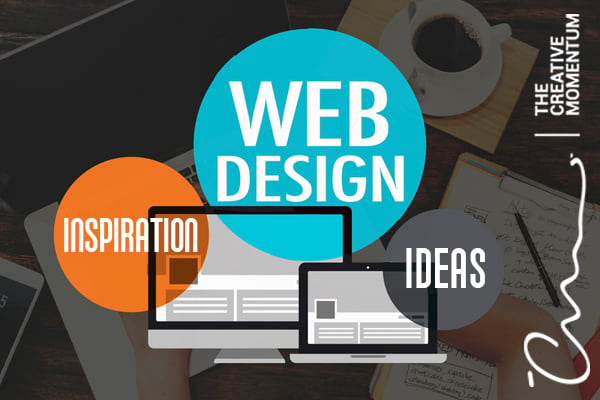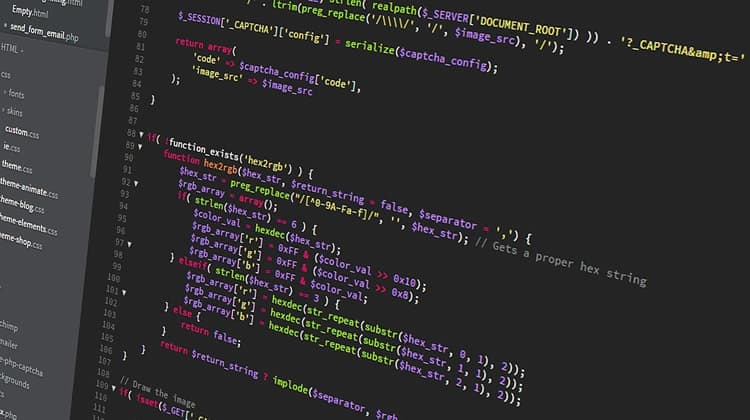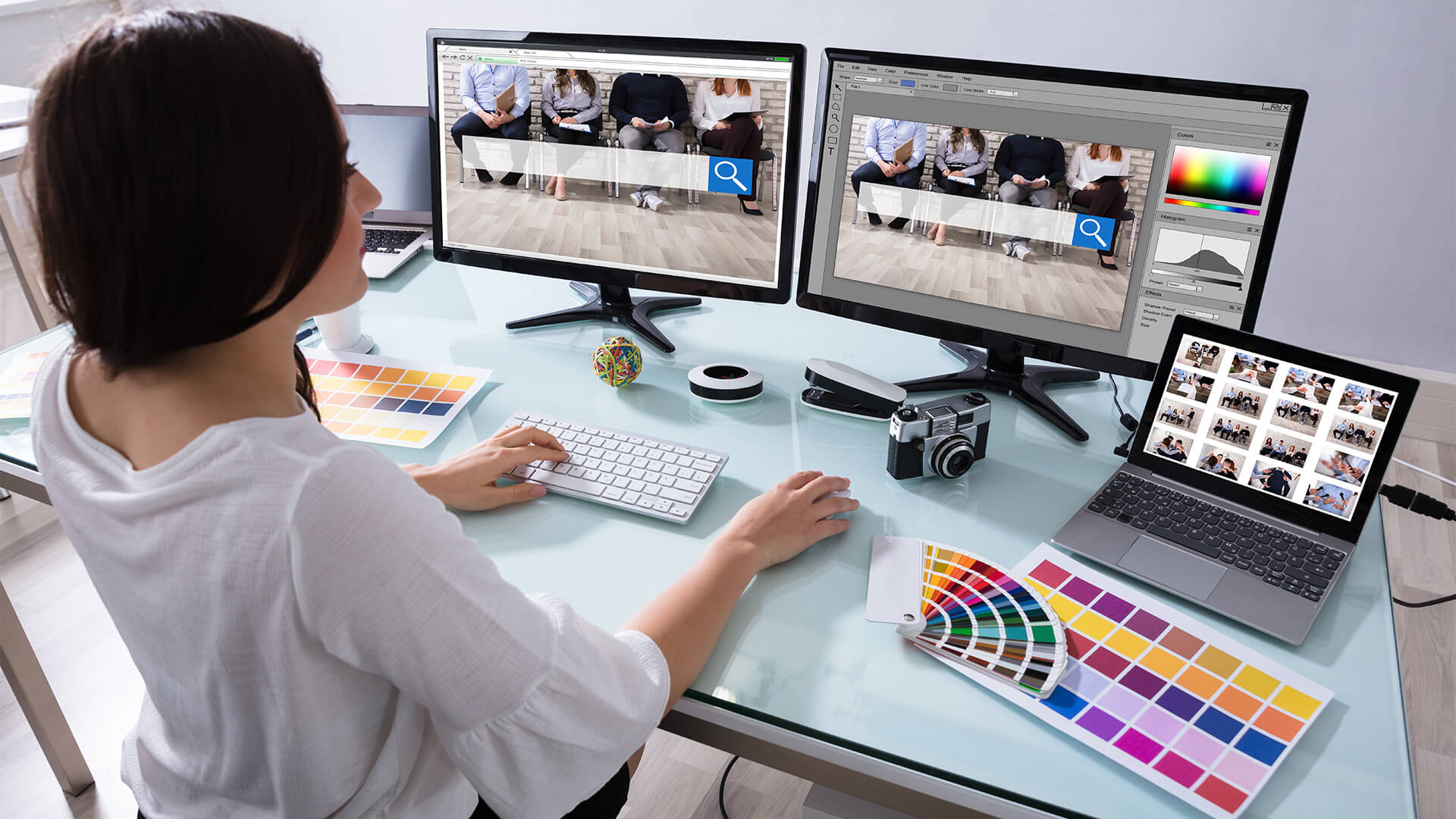All Categories
Featured
Table of Contents
- – Web Design Inspiration : The Best Website Desi...
- – What Is Web Design? - Interaction Design Foun...
- – Penner Home - Durham Web Design - Penner Web ...
- – Law Firm Website Design, Attorney Web Design,...
- – Web Design Courses & Tutorials - Codecademy T...
- – Web Design - Linkedin Learning, Formerly Lynd...
- – Why Is Web Design Important? - 6 Reasons To ...
- – Webpage Design (Article) - Further Learning ...
- – What Does A Web Designer Do? - Careerexplore...
- – 34 Of The Best Website Designs To Inspire Yo...
- – Wicky Design: Philadelphia Web Design Tips a...
Web Design Inspiration : The Best Website Design Ideas Tips and Tricks:
Quick summary Functionality and the utility, not the visual design, identify the success or failure of a website. Given that the visitor of the page is the only individual who clicks the mouse and therefore decides whatever, user-centric design has developed as a standard approach for effective and profit-oriented web style - web design frederick md.
and the utility, not the visual style, figure out the success or failure of a site. Because the visitor of the page is the only person who clicks the mouse and therefore chooses everything, user-centric style has actually become a basic method for effective and profit-oriented website design. After all, if users can't utilize a function, it may as well not exist.
g. where the search box must be put) as it has actually already been performed in a variety of posts; instead we focus on the approaches which, utilized properly, can result in more sophisticated design decisions and streamline the procedure of perceiving presented details. Please see that you may be interested in the usability-related posts we've released before: Concepts Of Great Website Style And Reliable Website Design Guidelines, In order to use the concepts appropriately we first need to understand how users communicate with websites, how they believe and what are the basic patterns of users' habits.
What Is Web Design? - Interaction Design Foundation (Ixdf) Tips and Tricks:
Visitors look at each brand-new page, scan some of the text, and click the first link that captures their interest or slightly looks like the thing they're looking for. In reality, there are big parts of the page they don't even look at. Many users browse for something intriguing (or helpful) and clickable; as quickly as some appealing candidates are discovered, users click.
If a page offers users with high-quality material, they are willing to jeopardize the content with ads and the design of the website. This is the reason that not-that-well-designed sites with high-quality content acquire a great deal of traffic over years. Material is more vital than the style which supports it.

Users don't read, they scan. Notice how "hot" areas abrupt in the middle of sentences. This is normal for the scanning process. Very easy concept: If a website isn't able to meet users' expectations, then designer stopped working to get his job done effectively and the company loses money. The greater is the cognitive load and the less instinctive is the navigation, the more ready are users to leave the site and search for alternatives.
Penner Home - Durham Web Design - Penner Web Design ... Tips and Tricks:
Neither do they scan webpage in a direct style, going sequentially from one website section to another one. Instead users satisfice; they select the first sensible choice. As quickly as they find a link that seems like it might lead to the goal, there is a really good possibility that it will be instantly clicked.
It doesn't matter to us if we understand how things work, as long as we can use them. If your audience is going to imitate you're developing signboard, then design great signboards." Users want to be able to manage their browser and rely on the constant information presentation throughout the website.
If the navigation and website architecture aren't instinctive, the variety of enigma grows and makes it harder for users to understand how the system works and how to obtain from point A to point B. A clear structure, moderate visual ideas and quickly recognizable links can assist users to find their path to their aim.
Law Firm Website Design, Attorney Web Design, Lawyer ... Tips and Tricks:

claims to be "beyond channels, beyond items, beyond distribution". What does it imply? Since users tend to explore websites according to the "F"-pattern, these three statements would be the very first components users will see on the page once it is loaded. Although the style itself is simple and instinctive, to understand what the page is about the user needs to look for the response.
Once you have actually achieved this, you can communicate why the system works and how users can gain from it. Individuals won't use your web site if they can't find their way around it. 2. Don't Squander Users' Perseverance, In every task when you are going to use your visitors some service or tool, attempt to keep your user requirements minimal.
Newbie visitors are prepared to, not filling long web kinds for an account they may never use in the future. Let users explore the website and discover your services without requiring them into sharing personal information. It's not affordable to require users to enter an email address to evaluate the function.
Web Design Courses & Tutorials - Codecademy Tips and Tricks:
And that's what you want your users to feel on your web site. The registration can be done in less than 30 seconds as the form has horizontal orientation, the user doesn't even require to scroll the page.
A user registration alone suffices of an obstacle to user navigation to cut down on inbound traffic. 3. Handle To Focus Users' Attention, As sites supply both static and vibrant material, some aspects of the user interface attract attention more than others do. Clearly, images are more captivating than the text simply as the sentences marked as bold are more appealing than plain text.
Focusing users' attention to specific areas of the website with a moderate usage of visual components can help your visitors to receive from point A to point B without thinking about how it really is expected to be done. The less enigma visitors have, the they have and the more trust they can develop towards the business the website represents.
Web Design - Linkedin Learning, Formerly Lynda.com Tips and Tricks:
4. Aim For Feature Exposure, Modern web designs are usually criticized due to their method of directing users with visually appealing 1-2-3-done-steps, big buttons with visual results etc. But from the style point of view these aspects actually aren't a bad thing. On the contrary, such as they lead the visitors through the website content in a very easy and easy to use method.
The website has 9 main navigation alternatives which are noticeable at the very first glimpse. What matters is that the material is well-understood and visitors feel comfy with the method they communicate with the system.
Instead a price: just what visitors are looking for. An optimum option for efficient writing is touse brief and concise expressions (come to the point as quickly as possible), use scannable layout (classify the material, use multiple heading levels, utilize visual components and bulleted lists which break the flow of uniform text blocks), usage plain and unbiased language (a promotion doesn't need to sound like ad; offer your users some reasonable and unbiased reason why they ought to use your service or stay on your site)6.
Why Is Web Design Important? - 6 Reasons To Invest In Site ... Tips and Tricks:
Users are seldom on a website to enjoy the style; in addition, most of the times they are searching for the information in spite of the design - web design frederick md. Pursue simpleness rather of intricacy. From the visitors' point of view, the finest website design is a pure text, without any ads or further content blocks matching precisely the query visitors used or the material they have actually been searching for.
Finch plainly presents the information about the site and offers visitors an option of choices without overcrowding them with unneeded content. 7. Do not Hesitate Of The White Space, In fact it's actually tough to overstate the importance of white space. Not only does it help to for the visitors, but it makes it possible to view the info presented on the screen.
Complex structures are more difficult to check out, scan, analyze and work with. If you have the choice between separating two style segments by a noticeable line or by some whitespace, it's usually better to use the whitespace solution. (Simon's Law): the much better you handle to supply users with a sense of visual hierarchy, the much easier your content will be to perceive.
Webpage Design (Article) - Further Learning - Khan Academy Tips and Tricks:
The very same conventions and guidelines must be used to all elements.: do the most with the least quantity of hints and visual elements. Four major points to be considered: simplicity, clearness, distinctiveness, and focus. Simpleness consists of only the components that are most essential for interaction. Clearness: all components ought to be developed so their meaning is not uncertain.
Conventions Are Our Friends, Conventional style of site aspects does not result in a boring web website. It would be an usability problem if all websites had various visual discussion of RSS-feeds.
comprehend what they're expecting from a website navigation, text structure, search positioning etc. A common example from use sessions is to translate the page in Japanese (assuming your web users do not understand Japanese, e. g. with Babelfish) and supply your use testers with a job to discover something in the page of different language.
What Does A Web Designer Do? - Careerexplorer Tips and Tricks:
Steve Krug recommends that it's much better to, but make the most of conventions when you do not. 10. Test Early, Test Frequently, This so-called TETO-principle ought to be used to every website design task as usability tests frequently provide into substantial problems and problems connected to an offered design. Test not too late, not too little and not for the incorrect reasons.
Some essential indicate keep in mind: according to Steve Krug, and testing one user early in the job is better than screening 50 near completion. Accoring to Boehm's very first law, mistakes are most frequent during requirements and style activities and are the more expensive the later they are removed.
That indicates that you develop something, test it, fix it and then evaluate it again. There may be issues which haven't been discovered during the first round as users were virtually blocked by other issues.
34 Of The Best Website Designs To Inspire You In 2022 Tips and Tricks:

This holds for designers. After you have actually dealt with a website for couple of weeks, you can't observe it from a fresh perspective any longer. You know how it is built and for that reason you understand exactly how it works you have the knowledge independent testers and visitors of your site wouldn't have.
It can be linked to other areas such as graphic style, user experience, and multimedia arts, however is more aptly seen from a technological perspective. It has become a large part of people's everyday lives. It is hard to think of the Internet without animated graphics, various styles of typography, background, videos and music.

Throughout 1991 to 1993 the World Wide Web was born. Text-only pages might be viewed using a simple line-mode internet browser. There had been no integrated method to graphic design components such as images or sounds.
Wicky Design: Philadelphia Web Design Tips and Tricks:
The W3C was developed in October 1994 to "lead the Web to its full potential by developing typical procedures that promote its evolution and guarantee its interoperability." This discouraged any one company from monopolizing a propriety web browser and programs language, which might have altered the result of the Internet as a whole.
As this has occurred the innovation of the web has likewise moved on. There have actually likewise been substantial changes in the way people utilize and access the web, and this has altered how websites are designed.
Learn more about Lovell Media Group LLC or TrainACETable of Contents
- – Web Design Inspiration : The Best Website Desi...
- – What Is Web Design? - Interaction Design Foun...
- – Penner Home - Durham Web Design - Penner Web ...
- – Law Firm Website Design, Attorney Web Design,...
- – Web Design Courses & Tutorials - Codecademy T...
- – Web Design - Linkedin Learning, Formerly Lynd...
- – Why Is Web Design Important? - 6 Reasons To ...
- – Webpage Design (Article) - Further Learning ...
- – What Does A Web Designer Do? - Careerexplore...
- – 34 Of The Best Website Designs To Inspire Yo...
- – Wicky Design: Philadelphia Web Design Tips a...
Latest Posts
Google Web Designer - Home Tips and Tricks:
Web Developers And Digital Designers - Bureau Of Labor ... Tips and Tricks:
Top Web Design Agencies Ranked - 2022 Reviews - Clutch.co Tips and Tricks:
More
Latest Posts
Google Web Designer - Home Tips and Tricks:
Web Developers And Digital Designers - Bureau Of Labor ... Tips and Tricks:
Top Web Design Agencies Ranked - 2022 Reviews - Clutch.co Tips and Tricks: